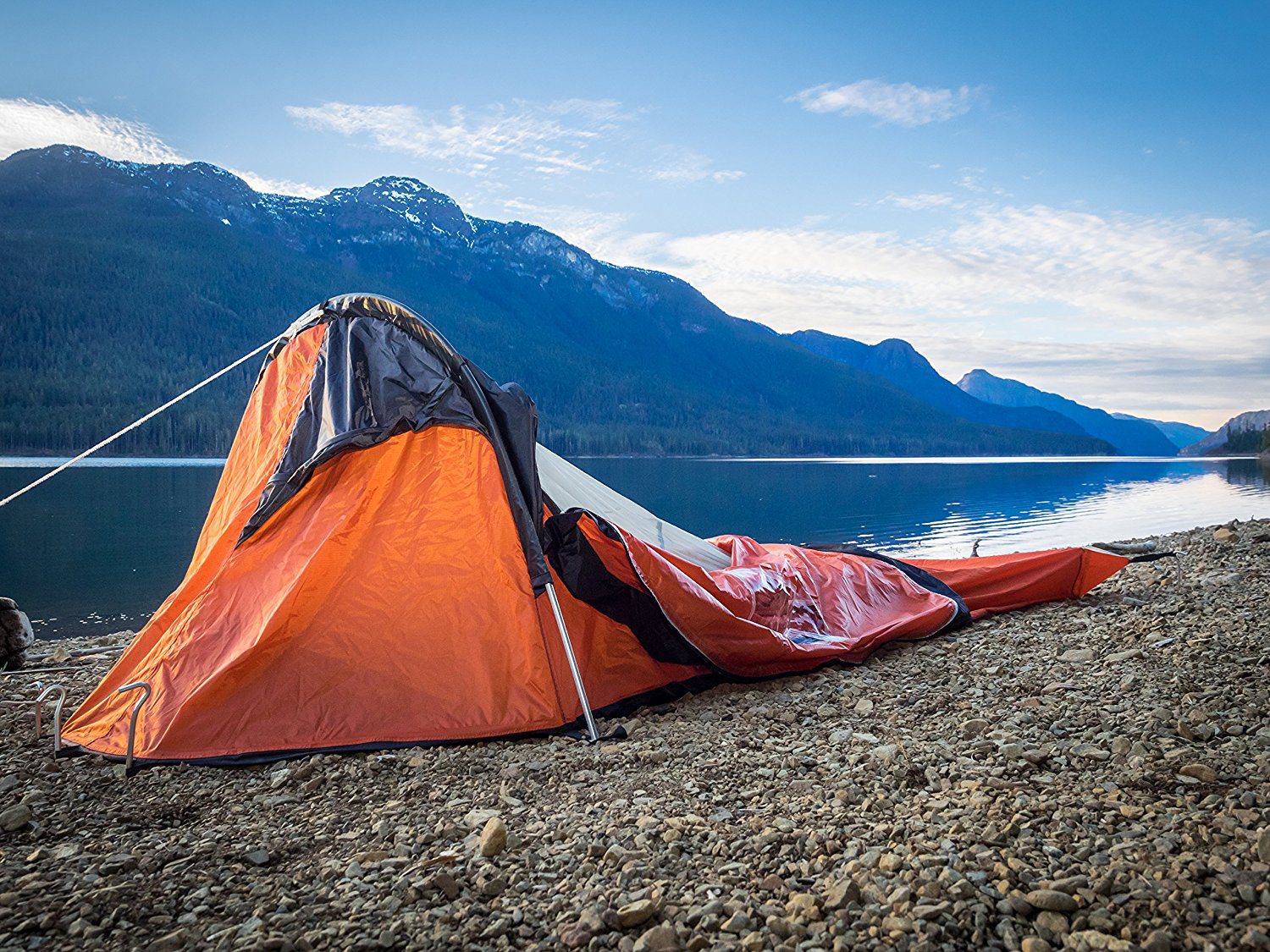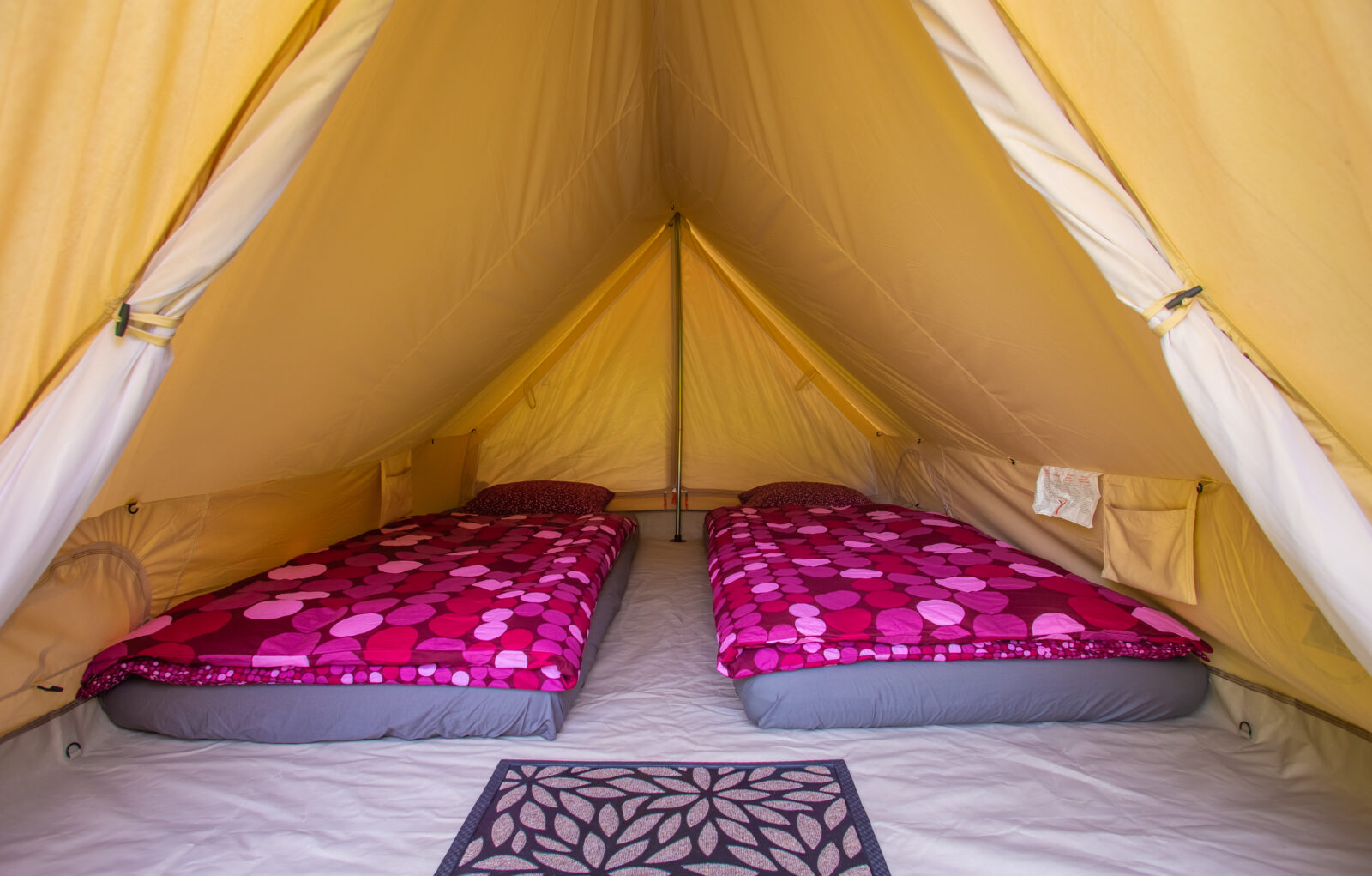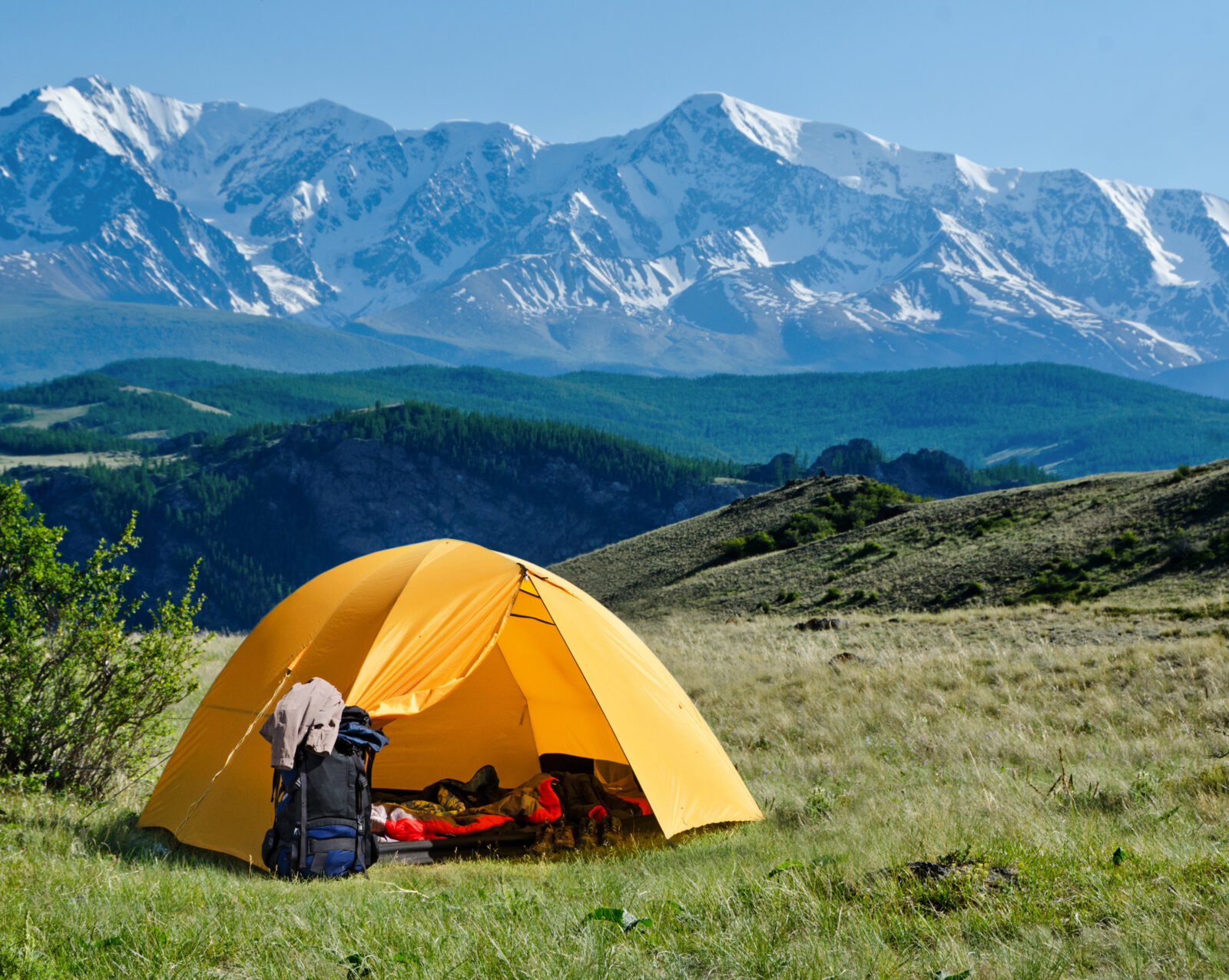Looking for a shelter for your next camping trip but not sure if a bivy sack or a tent is right for your needs?
We understand.
It can be tricky to determine precisely what kind of camping shelter you need for your adventures, so we’ve put together this guide to doing just that.
Up next, we’ll walk you through the differences between bivy sacks and tents so you can decide which one best suits your specific camping style, whether that’s car camping in Acadia National Park or backpacking in Yosemite.
TL;DR
Bivy sacks are a solid choice for solo campers heading out on fast and light trips where weight savings and packability are your chief concerns. However, tents offer more for campers in terms of comfort, weather-resistance, durability, and overall versatility.
Let’s take a closer look at the differences between a bivy and a tent, and how they stack up against each other.
Page Contents
What's a bivy sack?
A bivy sack, or a bivouac sack, is a type single person camping shelter that’s designed to be lightweight and highly portable.
Historically, bivy sack-type shelters have been used by militaries around the world for hundreds of years, but the modern bivy sack came into existence within the last half-century.
Modern bivy sacks were designed for climbers and mountaineers who needed an ultralight shelter system for use in high alpine environments where there just wasn’t enough space to pitch a tent.
Bivy sacks are essentially miniature tents that are just large enough to cover a single person, their sleeping bag, and their sleeping pad. There are many different types of bivy sacks out there, including both waterproof and not waterproof models, for use in different terrain.
With that in mind, bivy sacks are most appropriate for ultralight backpacking, mountaineering, and alpine climbing trips where you want to keep weight and bulk to a minimum, even if it means sacrificing a little bit of comfort in the short term.
What's a tent?
Perhaps the most commonly used shelter for outdoor recreation, tents have been used by humans for thousands of years.
Although humans have and continue to live full-time in tents in many parts of the world, the modern camping tent has its roots in the various shelters used by militaries during wars and other campaigns.
Tents are designed to provide you with a small, yet comfortable living space that’s warm and dry, even in foul weather.
Camping tents come in a wide range of different sizes, though the one-person and two-person tent models are most comparable to a bivy sack.
Unlike bivy sacks, tents have enough room for one to two campers, their sleeping pads, sleeping bags, and most of their other gear. They’re an ideal shelter for any outdoor adventure where comfort and functionality are the chief priority and where weight savings are important, but not essential.
Price comparison
Both bivy sacks and camping tents come in a wide range of different prices, so there are models out there to suit nearly any budget, from $50 to $900 or more.
However, while it’s possible to get a decent, waterproof camping tent for under $100, it can be difficult to find a truly weatherproof bivy sack for a budget-friendly price.
So, for situations where affordability is your top concern, you’ll likely get a better value with a tent than with a bivy sack.
Winner : Tent because you can find reliable tents that don’t break the bank. While there are certainly some affordable bivy sacks out there, they’re not always the best value for the money.
Ease of set up
With a bit of practice, neither a tent nor a bivy sack is exceptionally difficult to set up, though some models are certainly trickier than others.
That being said, if we compare a standard tent with a standard bivy sack, you’ll often find that the bivy sack is faster to pitch.
This is simply because bivy sacks tend to be simpler pieces of gear with fewer parts that need to be assembled when you arrive in camp.
In fact, some bivy sacks don’t even have any poles to pitch or tent stakes to place. Instead, you simply need to slide your sleeping bag and sleeping pad inside and climb in to start snoozing.
Alternatively, most tents require that you set up two to six tent poles, tension multiple guylines, and place lots of tent stakes in order to pitch your shelter for the night.
Depending on the tent model and your comfort level with camping, the set-up process can take upwards of 10 or 20 minutes to complete.
Winner : Bivy sacks because most models require minimal, if any set up before you can crawl inside and get some rest after a day of hiking.
Comfort levels
Although most people think of camping as roughing it, it’s more than possible to be comfortable while snoozing in the outdoors. However, tents and bivy sacks offer drastically different experiences when it comes to your comfort level while in the mountains.
Since bivy sacks are meant to be lightweight and ultra-compact, they offer little by the way of extra space for tossing and turning.
In fact, most bivy sacks are designed to be mummy-shaped, just like a sleeping bag, so some campers find that they feel a little claustrophobic inside. This is particularly true if you’re tucked into your bivy sack with a thick winter sleeping bag or other bulky gear, like a heated jacket, which can make you feel very constrained inside your shelter.
Tents provide a very different camping experience. Although we’ll stop short of saying that backpacking tents are exceptionally spacious, they do usually offer enough space for you to sit upright and toss and turn at night.
Winner : Tents because they offer plenty of headroom and extra living space for lounging and snoozing while outside.
Insulation and warmth
Both bivy sacks and tents are meant to help you stay warm and dry in inclement weather while you’re outside.
Although most tents and bivy sacks aren’t insulated like your sleeping bag is, you’ll often find that you stay warmer inside a tent than inside a bivy sack.
Why?
Well, it all has to do with condensation.
In general, bivy sacks tend to be very prone to condensation build-up at night because they are usually made from a single piece of fabric that’s not as breathable as the mesh and rain fly combination that you find on traditional two wall backpacking tents.
As a result, many campers find that they wake up in the morning with lots of condensation on the inside of their bivy sack, which soaks their sleeping bags and leads to decreased warmth on cold nights, especially with down sleeping bags.
Of course, condensation can also be problematic in tents, but it tends to be less of a concern than in bivy sacks.
Winner : Tents because they are less likely to have significant condensation build-up, which means they’re less likely to soak your sleeping bag at night and impede its ability to keep you warm.
Packability and portability
Portability is of the utmost importance when you’re camping or backpacking, so having a lightweight and highly packable shelter is key.
When it comes to portability, bivy sacks generally have the edge over tents.
That’s because bivy sacks are purposefully designed to be a lightweight, highly packable shelter option for backcountry adventures.
Indeed, your standard bivy sack will often weigh just a fraction of what you can expect from a standard one-person tent.
Of course, there are now some very lightweight solo tents on the market, so it is possible to get a tent that’s just as light as a bivy sack if you’re willing to spend a bit of extra money. But, in general, a bivy sack is usually lighter and more packable than a tent.
Winner : Bivy sacks because they are smaller, lighter, and have fewer parts than their tent counterparts, which makes them a solid choice for ultralight camping.
Durability
Modern tents and bivy sacks have come a long way from their humble origins. These days, many tents and bivy sacks are crafted from high-end fabrics and materials that are lightweight, yet oh-so durable.
Although any piece of gear can break when used incorrectly or in very harsh conditions, most tents and bivy sacks are strong enough to withstand years of regular use.
With that in mind, bivy sacks are usually the better bet for all-around durability, just because they’re simpler pieces of gear with fewer parts that can break.
This is especially true when you consider that most bivy sacks have very few poles, which are the most likely part of any tent to snap in high winds.
Winner : Bivy sacks because they have few, if any poles, which are often the weak link in any tent design.
Weather-resistance
One of the main roles of a camping shelter is to protect you from the wind and the rain, so it should come as no surprise that weather-resistance is a key concern when deciding between a bivy sack and a tent.
As far as weatherproofing goes, most tents are two wall tents that have a waterproof nylon or polyester rainfly and an inner mesh canopy for added breathability. They also tend to be fairly sturdy in the wind, though this depends on quite a bit on the design of the tent model in question.
Bivy sacks, however, are usually made with either a water-resistant fabric or a waterproof-breathable membrane. Although there are certainly some bivy sacks that are fully waterproof, these aren’t as common as you might think.
Indeed, you’ll usually find that most bivy sacks just don’t keep you as dry as tents do in very rainy or windy conditions.
Winner : Tents because they are all made with waterproof rainflies while some bivy sacks have only water-resistant outer fabrics.
Recommended Reads :
Gaby Pilson
Gaby is a professional mountain guide with a master’s degree in outdoor education. She works primarily in the polar regions as an expedition guide, though she can be found hiking, climbing, skiing, sailing, or paddling in some of the world’s most amazing places when not at work.


